Game Balance vs Historical Accuracy: The Eternal Battle
By Michael Rafferty
Back in my younger days, we were playing a lot of Pike and Shotte English Civil War in 28mm. A friend of mine wanted to run a scenario at AdeptiCon 2018, which would be the first game I helped run at AdeptiCon, and we needed to find an appropriate battle.
There was a small, local convention that morning that my friend Dustin and I went to. The guy trying to organize the Pike and Shotte game was running a playtest that afternoon. We hurried from the local convention to our local store, The Game Room to play in it.
I’d been trying to get Dustin into historicals for years since the loss of Warhammer Fantasy broke his heart, and I was optimistic he’d like Pike and Shotte. Sadly, historical accuracy was about to ruin our day.
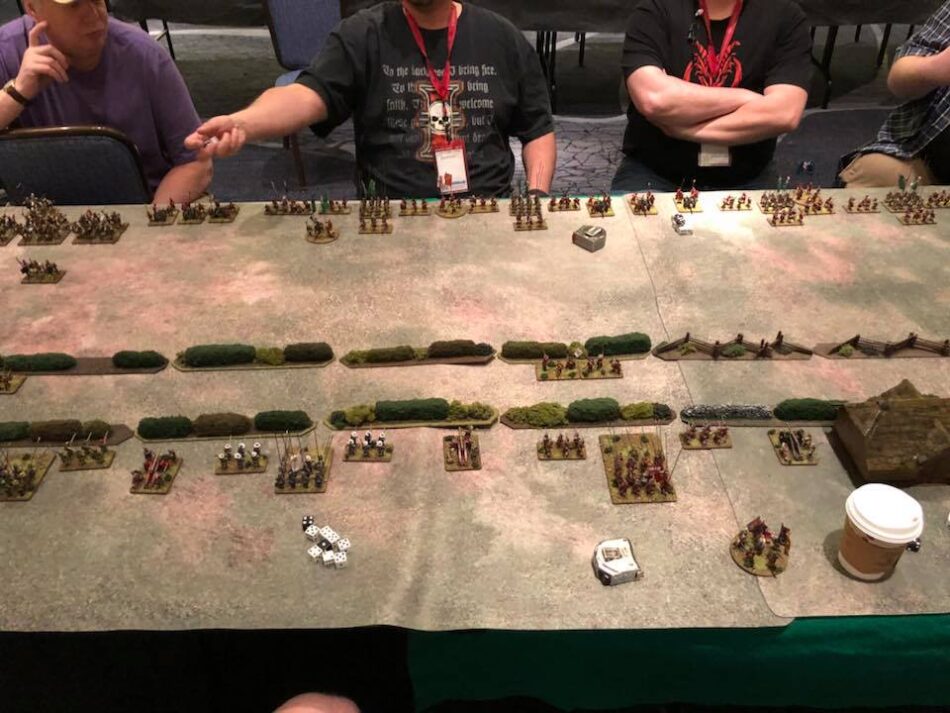
We arrived at The Game Room and went to one of the back rooms where the game was set up. Our first look at the game was concerning. One side was heavily outnumbered. This could work if one side was a more elite fighting force, but this wasn’t the case. The elite Parliamentarian force, with its 2+ save heavy cavalry, outnumbered the average Scots and were in a better position overall.
The game went how you thought it would and was over in under an hour. It was explained to us that in the actual battle, the Scots were crushed by the Parliamentarians and our game pretty accurately followed the battle. This was of little comfort since it was a game where we as the Scots players got to do very little and got beat up for the whole game. The only movement we got to do was pulling out units off the board after they broke and ran.
To this day, I still hear about how bad this game was and it’s brought up whenever I’m discussing historical games. I use this game as an example of what not to do, when good intentions lead to bad results.
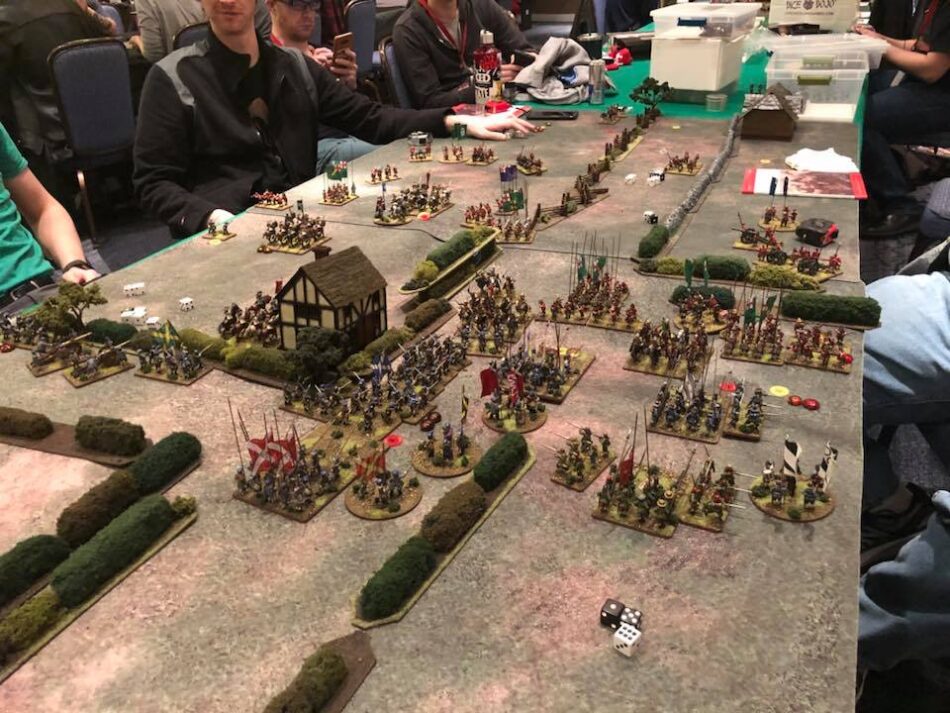
This game was an example where adherence to historical accuracy led to a bad game. I have no idea why they thought this would be a fun game to play. In Total War, this game would have been a textbox example of an autoresolve battle.
Furthermore, they thought this game would go well at AdeptiCon. At AdeptiCon, we have a lot of very nice games, with great terrain and expertly painted models. If event games are going to be run there they both have to look good and need to be fun. The reputation of both AdeptiCon and historical gaming is at stake, since many of these games would be the players first experience with historicals.
We need to put on a good show with a game that’s both fun and gives a good historical flavor. We eventually found that scenario for Pike and Shotte, with the players at AdeptiCon 2018 having a good time. The beer may have helped too.
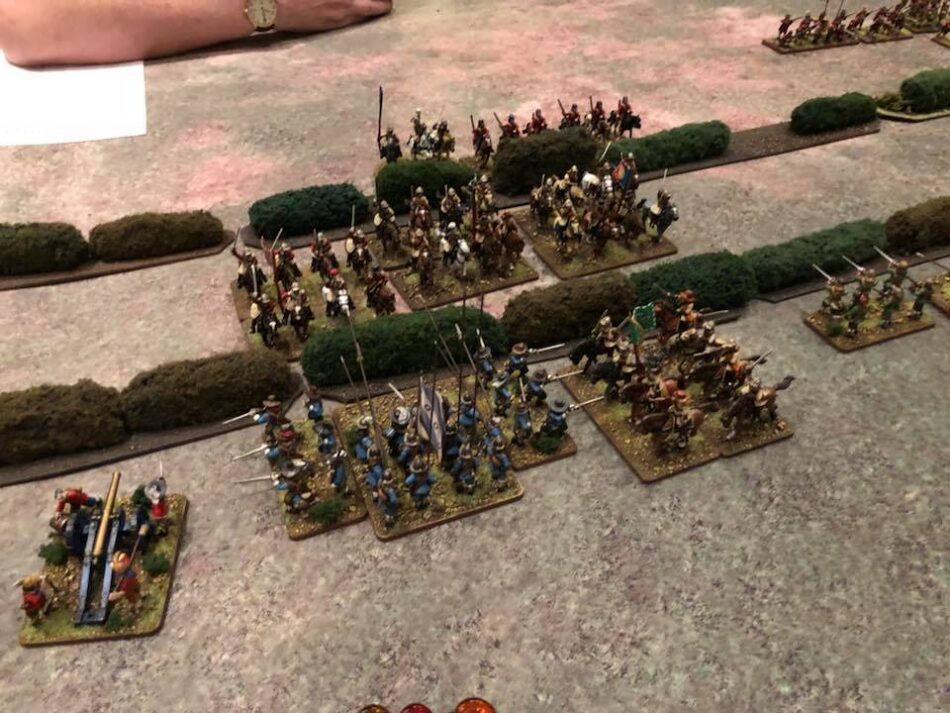
At AdeptiCon 2019, we decided to run a couple more games. I personally love naval combat and I wanted to run Victory at Sea. We decided to do Cape Mattapan because Don wanted to paint up some Italian ships. We also looked at doing Chinese Farm using Fate of a Nation, which unknown to us was going to be given out in the swag bags that year. Fortuitous.
For Cape Matapan, I build the scenario true to what happened historically. This was three British battleships, seven light cruisers, and 17 destroyers versus one Italian battleship, six heavy cruisers, two light cruisers, and 13 destroyers.
We did the same with Chinese Farm. I did some research on the battle and we decided to have an infantry fight over the farm itself along with a tank battle to the side. Fun historical scenarios for everyone backed up by our research!
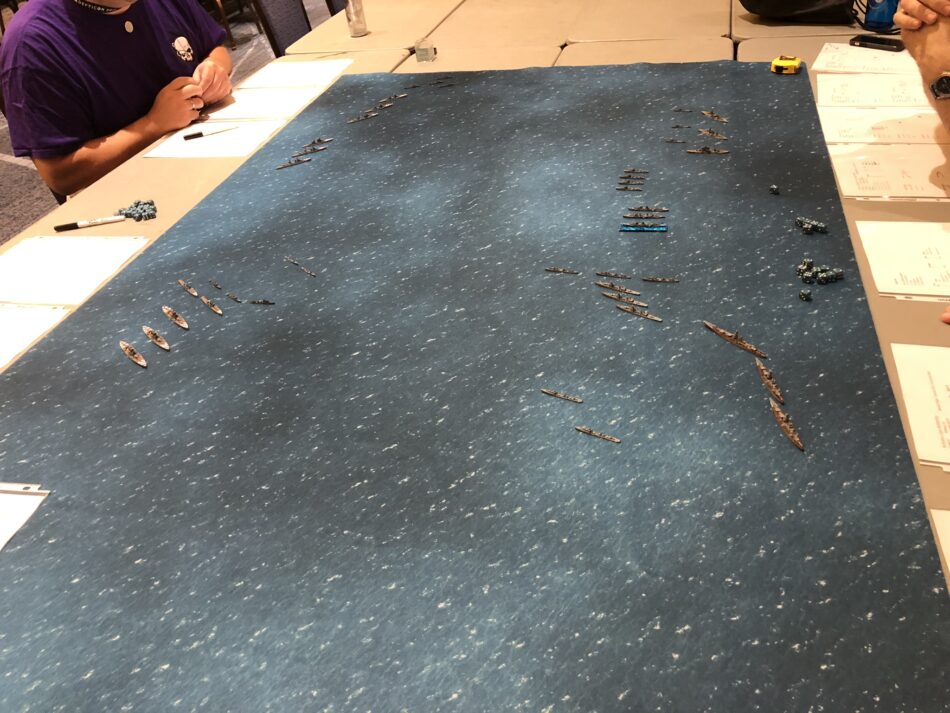
And then we playtested them. Always playtest your scenarios, then playtest them again. Maybe a third time as well. For Chinese Farm, the infantry fight was fun. We didn’t make any changes there and it went well.
The tank fight… less well. As it turns out, Magach 6s will wreck Egyptian T-55s and T-62s. The Israelis barely took any casualties and wiped out the Egyptians. Not terribly fun for the Egyptian player.
The Cape Matapan game was just as bad. The British were outranged by the Italians, but their overall greater firepower and durability of their battleships made the difference. The game itself was mostly moving light units around that didn’t do a lot of damage. Not terribly fun for anyone. We had to make some changes.
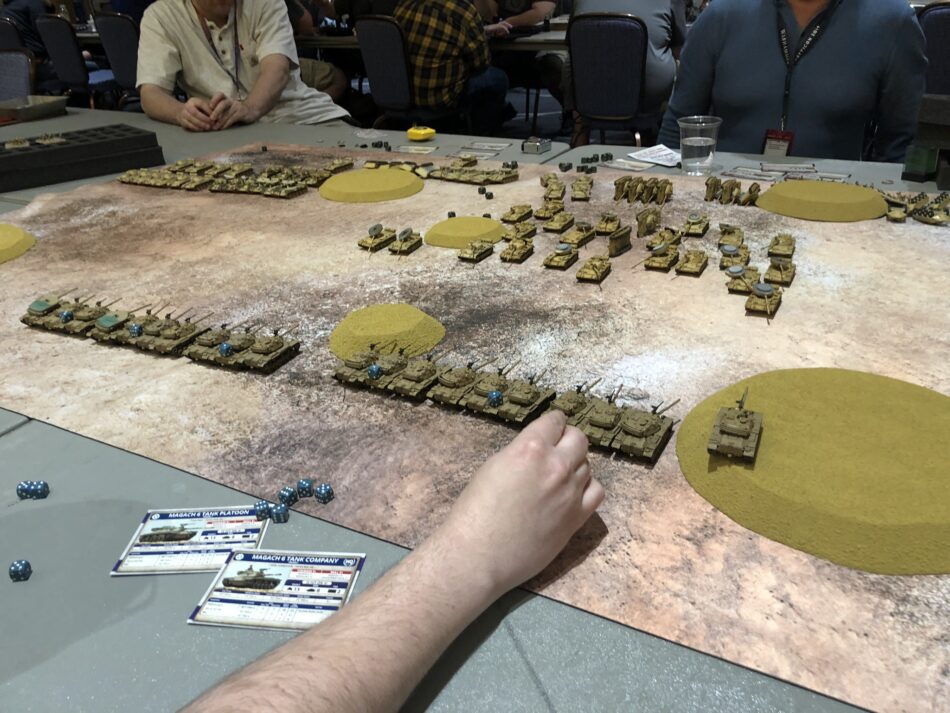
For Chinese Farm we added some BMP-1s and some additional ATGM teams for the Egyptians. This gave them a credible threat against the Magach 6s, forcing the Israeli player to use the terrain more effectively.
This also allowed the Egyptians to get their tanks in closer, which helped them to get more side shots and gang up on the Israelis. Overall, this was a massive improvement, and the game was fun now if a bit historically inaccurate. At least it was still plausible. For Cape Matapan, I just made something up.
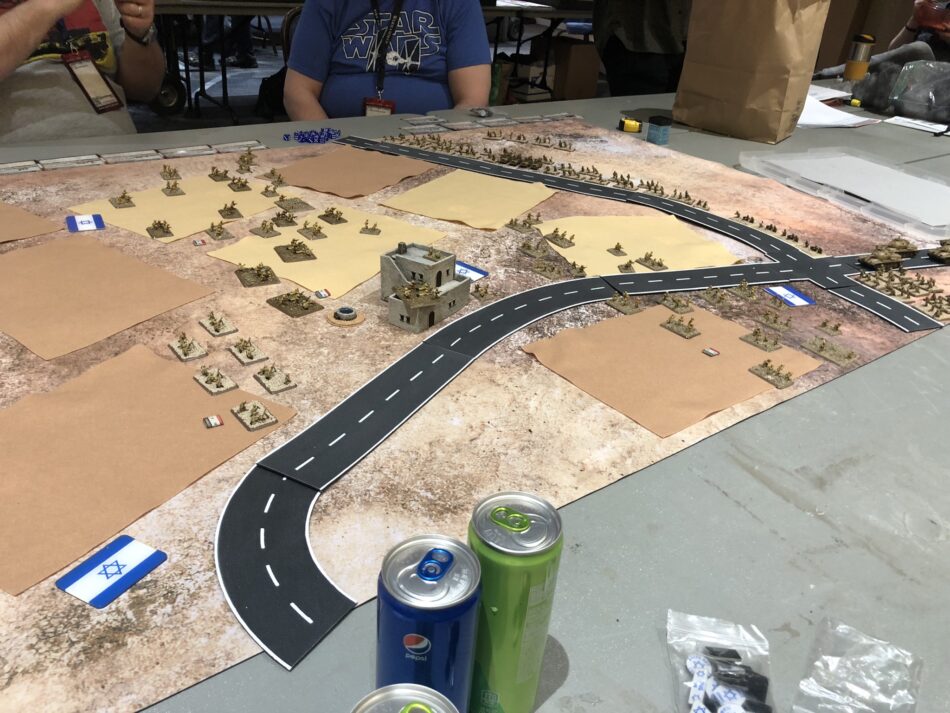
The British had Queen Elizabeth-class battleships in the Mediterranean during World War II. These were WW1-era ships with speeds to match. The Italian Littorio class battleships were more modern with a significant speed advantage. We debated on how to balance this.
One of the guys also wanted to paint some French ships. We ended up adding the two Dunkerque class battlecruisers and the Richelieu to the allied side. On the Italian side, we added all four Littorio class. This made it more of a big ship fight instead of a little ship fight. We ran with this at the con and the players had a good time, so I think this worked out better.
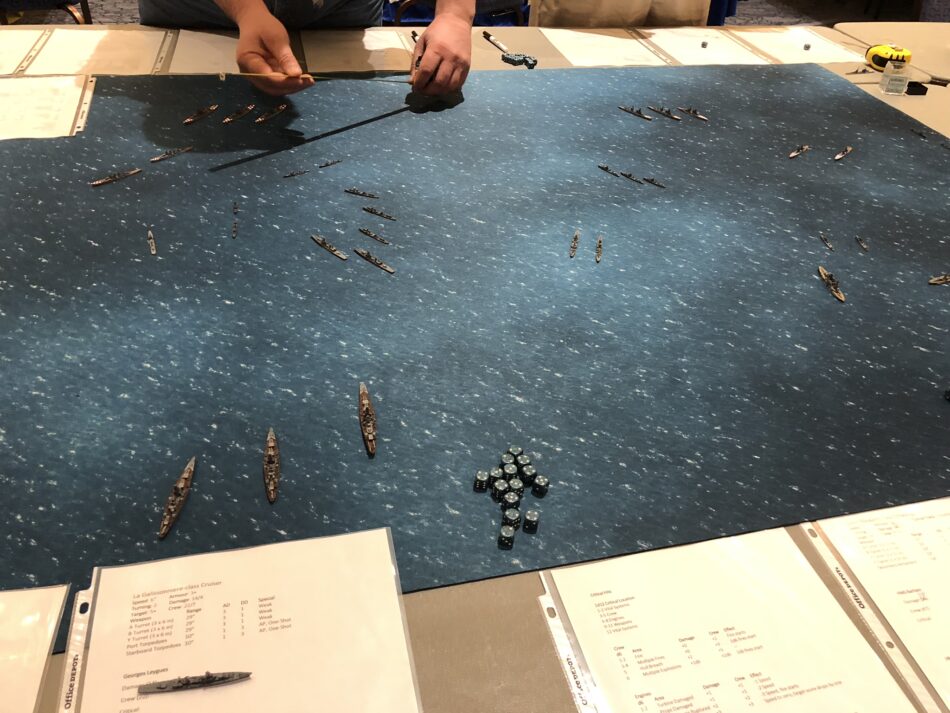
My point with this example is that making games 100% historically accurate may not lead to the best gaming experience. With a convention game, my goals are to provide an enjoyable three-to-five-hour gaming experience where I can introduce people to historical wargaming.
Ideally, I’d like them to learn a few things as well, but most gamers are initially going to be focused on the mechanics and the game itself. At a convention there is a high chance this is someone’s first historical gaming experience. I want that to be a positive one, where they can have a fun, evenly matched fight.
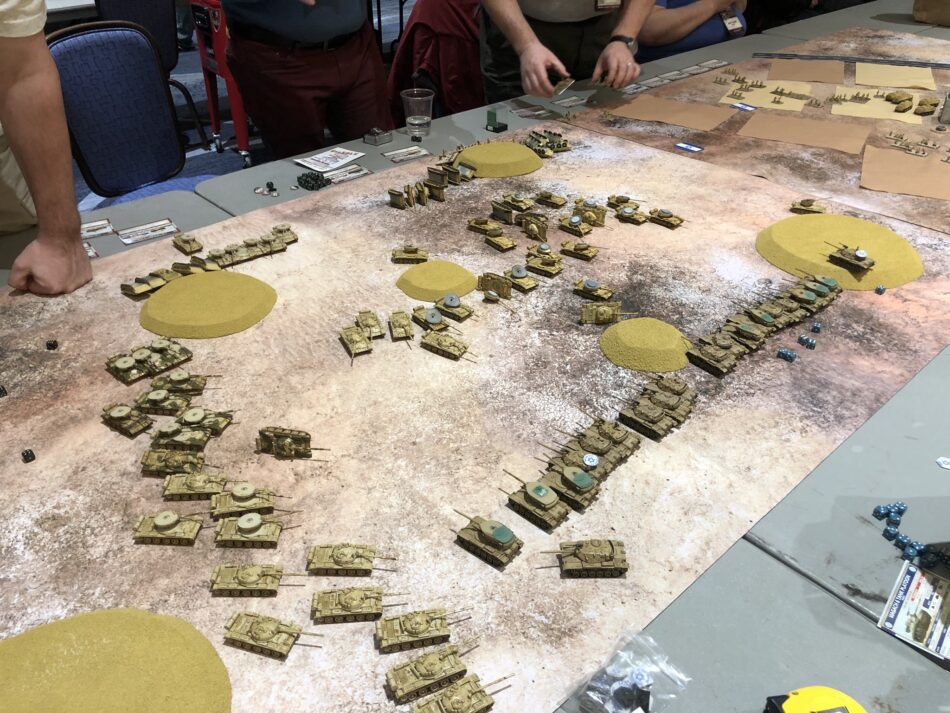
Now there is a place for some uneven fights. My group is looking at doing 73 Easting at some point. The Iraqis got absolutely demolished in that fight and it wasn’t even close. This wouldn’t be a terribly fun game for an unexpecting Iraqi player. At a local club, this could be a fun game.
Try to do better than what the Iraqis did. At a local club, it’s more likely you’ll have experienced players and ones that come into the game with proper expectations. What we’re going to do is play the Iraqis ourselves. We’ll run it as a learning game for Team Yankee. That way we can let the Americans win, make sure they have a good time, and learn how to play the game.
I’m also doing that with the Battle of the North Cape in Victory at Sea. I’m running the Scharnhorst and letting the players run the British. It’s a teaching game and it should be a good time. We’ve played a few times locally and they’ve been interesting games.
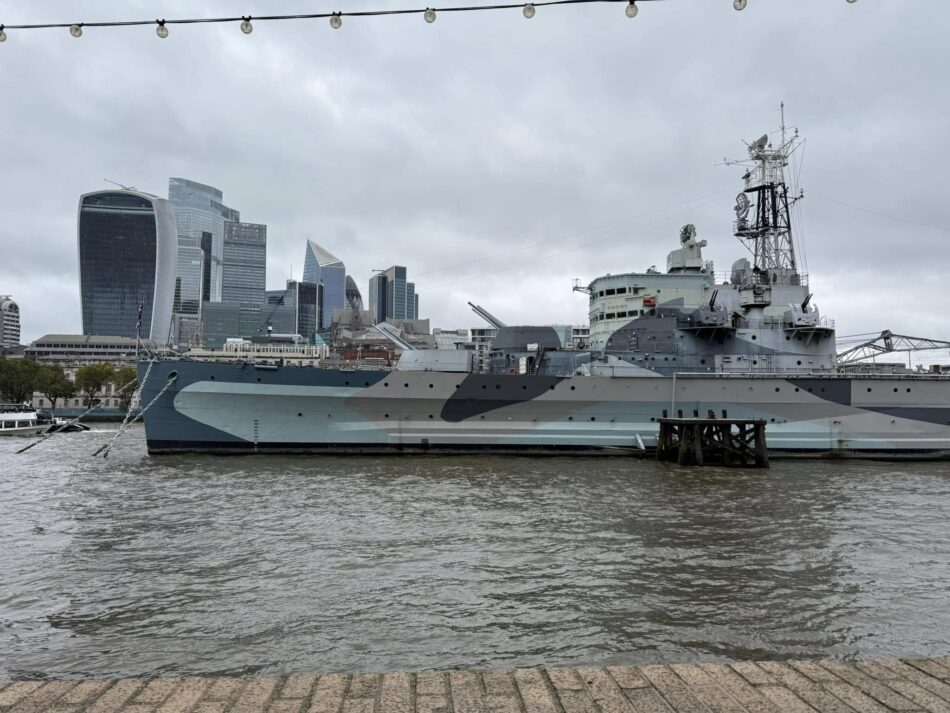
Balancing event games is tough. You must balance historical accuracy along with balancing the game itself, since most historical battles weren’t even. That’s a part of history and some people will run with that.
If you make that clear in the event description, you might be ok and set the proper expectations for the players. If not, you could turn someone off to historical wargaming. Every game could be a player’s first game. I also look at the players as my customers when I run an event game, and I want to make sure I’m providing a good experience for them. Looking at the balance of your game and how it plays is a large factor in this.

I’m certainly not the first to note this – the art of generalship is making sure the battles are one-sided in your favor. Balanced fights are failures at the strategic level.
In game terms, doing slightly better than the real side while still clearly losing is still not a great feeling. So the choices are a really limited set of historical battles, tweaking the orbats or capabilities of the sides while keeping the flavor of the historical event, or maybe co-op play against the game master or an AI for unbalanced games.